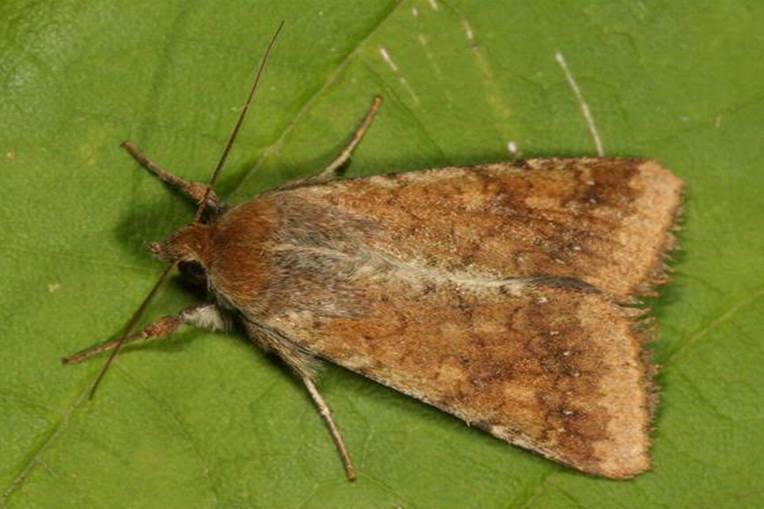
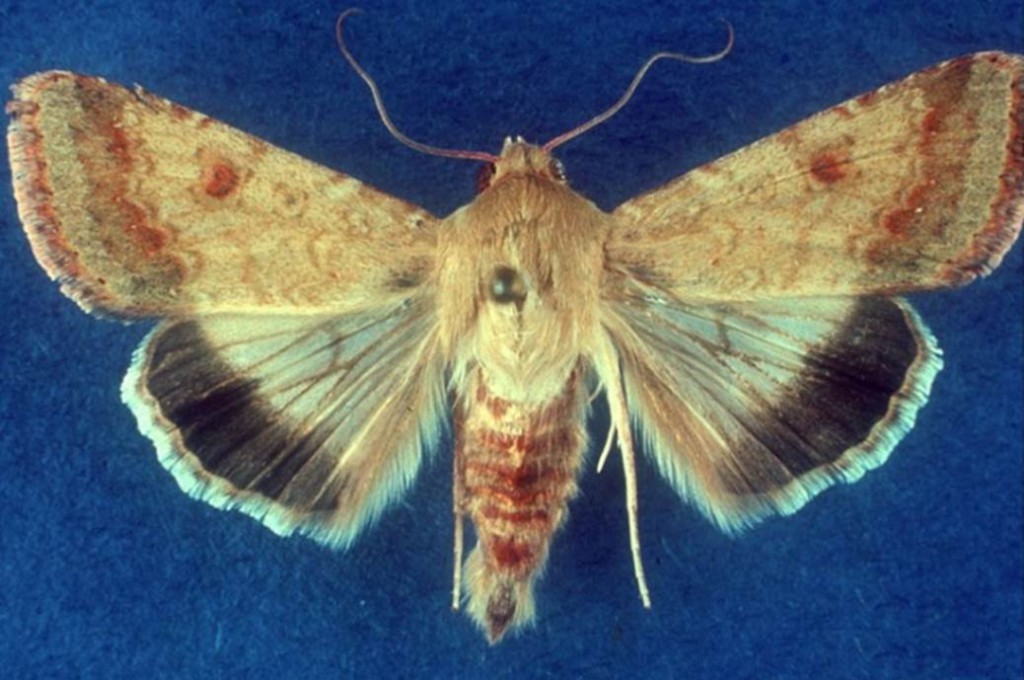 Figure 1. Adult old world bollworm. Credit: Gyorgy Csoka, Hungary Forest Research Institute, Bugwood.org, #5371130
Figure 1. Adult old world bollworm. Credit: Gyorgy Csoka, Hungary Forest Research Institute, Bugwood.org, #5371130
The old world bollworm a.k.a. cotton bollworm (Helicoverpa armigera) is a major agricultural pest known to attack many plants, including corn, cotton, small grains, soybeans, peppers, and tomatoes. Damage occurs when the larvae bore into the host’s flowers and fruit and feed within the plant; the larvae may also feed on the leaves of host plants (Fig. 3). This invasive pest can cause damage both in field and greenhouse settings. On 17 June 2015, one male old world bollworm was collected in a Cooperative Agricultural Pest Survey (CAPS) pheromone trap in a field in Bradenton, Florida, USA. This is the first detection in the U.S. outside of port interceptions.
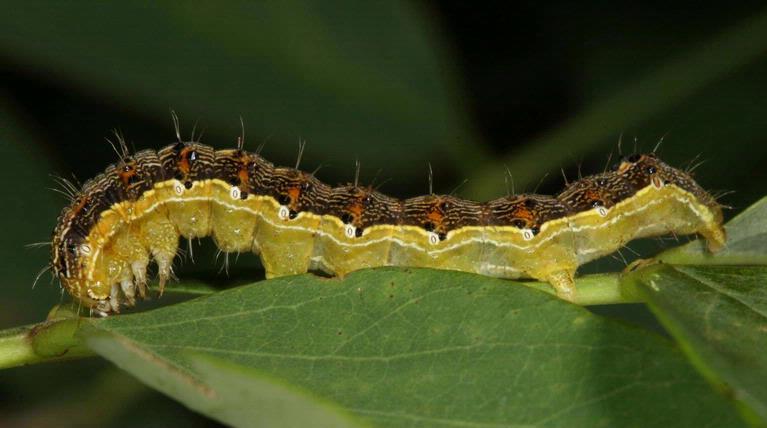
Identification: The native corn earworm, Helicoverpa zea, is externally identical in all life stages to the old world bollworm. Therefore, identification of the old world bollworm requires either dissection of adult moths or sequencing genes.
Eggs are very small with ribs that run lengthwise across their surface. They change from yellowish-white to dark brown just before hatching.
Larvae (Fig. 2) can measure up to 1.7 inches long and range in color from bluish green to brownish red, darkening after each molt.
Pupae are dark tan to brown in color and 0.6 to 0.9 inches long.
Adults (Fig. 1) have a wingspan of 1.4 to 1.6 inches and vary in color. Males United States Department of Agriculture are usually yellowish-brown, light yellow or light brown, and females are orange-brown.
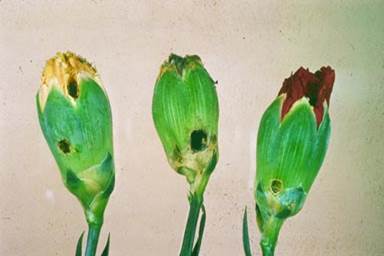
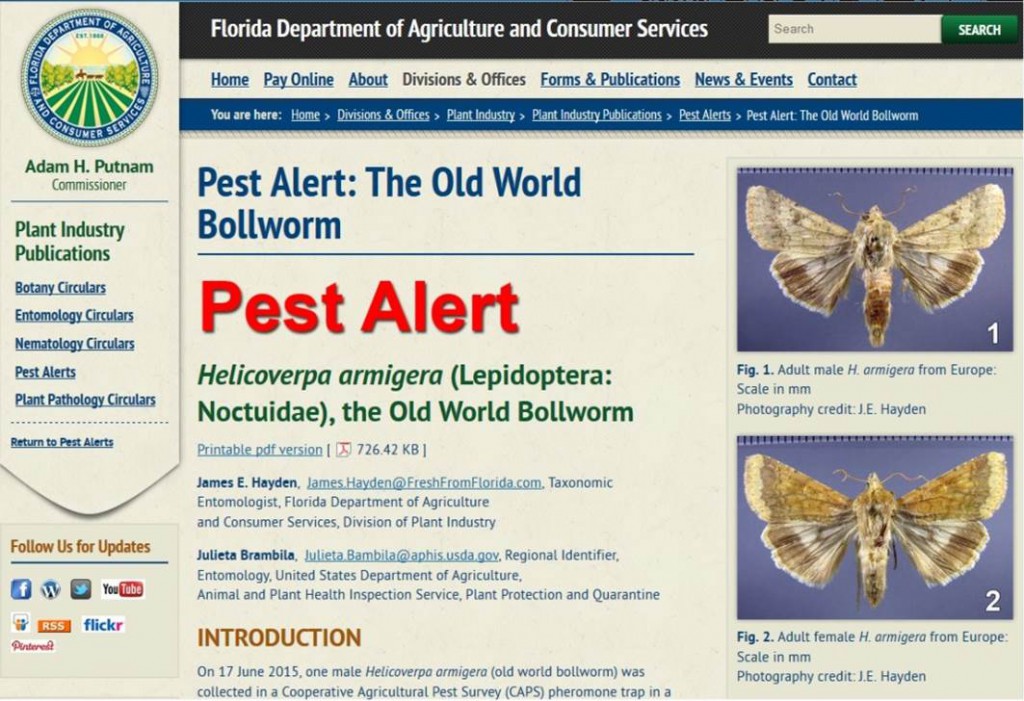
References:
Florida Department of Agriculture and Consumer Services Division of Plant Industry. Helicoverpa armigera (Lepidoptera: Noctuidae), the Old World Bollworm. 2015. Accessed 7/16/2015 – http://www.freshfromflorida.com/Divisions-Offices/Plant-Industry/Plant-Industry-Publications/Pest-Alerts/Pest-Alert-The-Old-World-Bollworm
USDA APHIS PPQ. Pest alert: Old world bollworm (Helicoverpa armigera). 2014. Accessed 7/16/2015 – http://www.aphis.usda.gov/publications/plant_health/2014/alert_old_world_bollworm.pdf
 0
0
